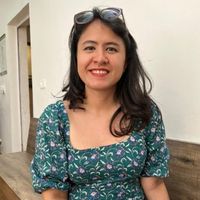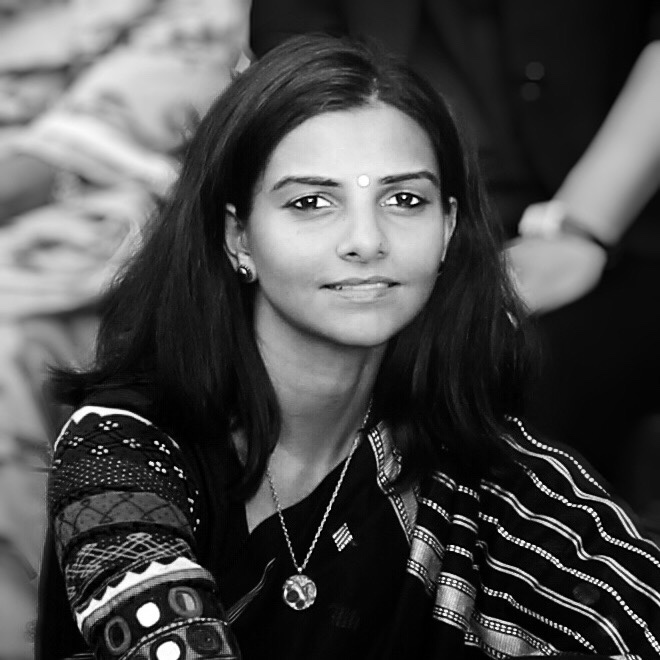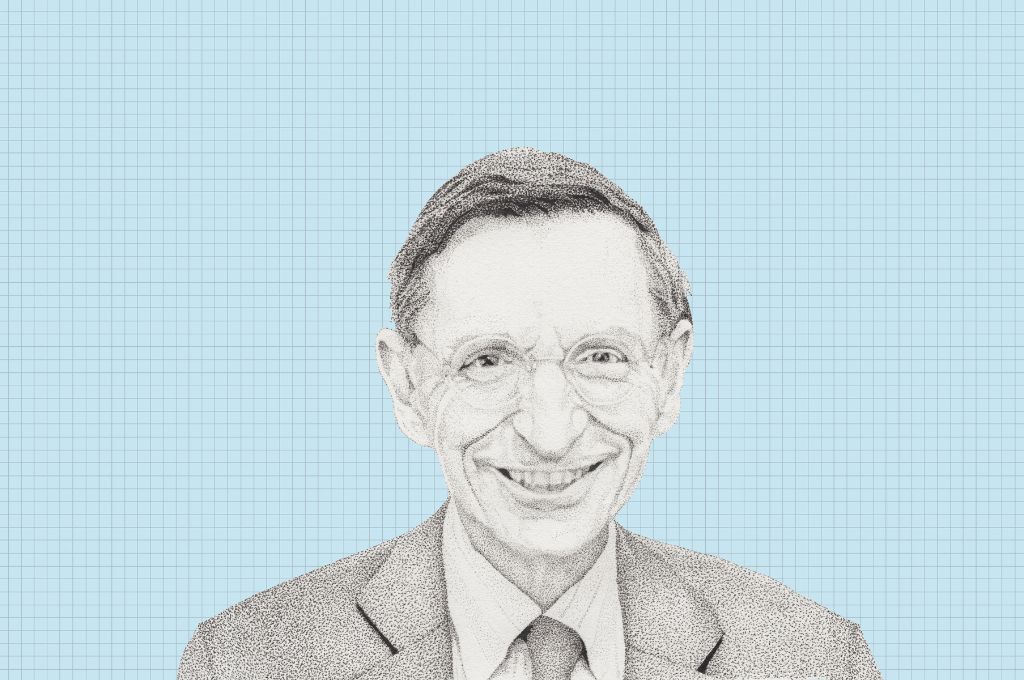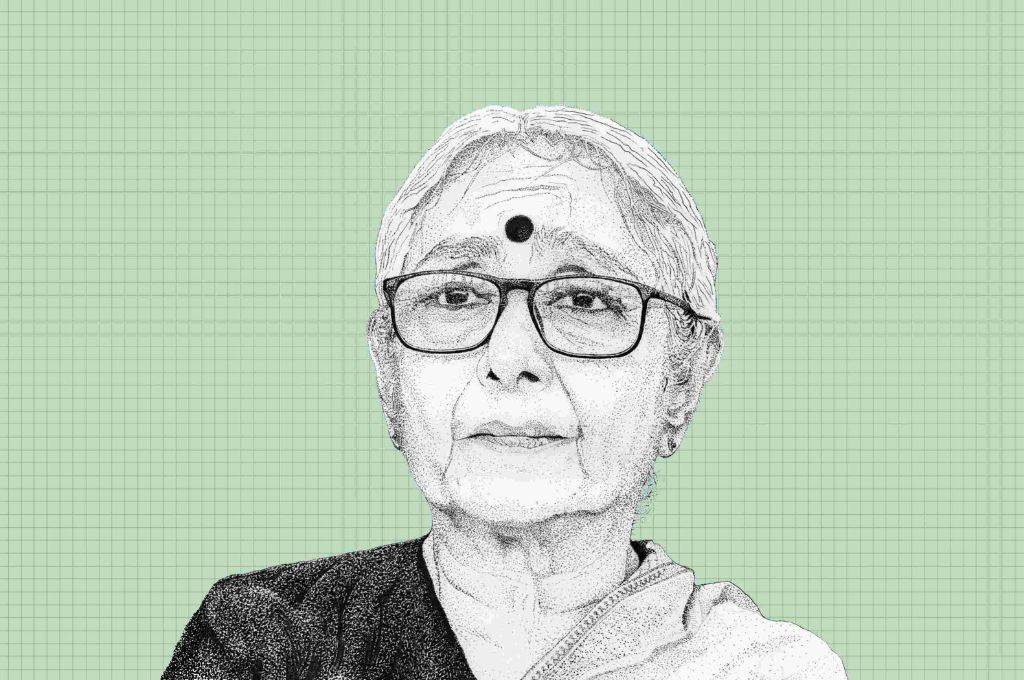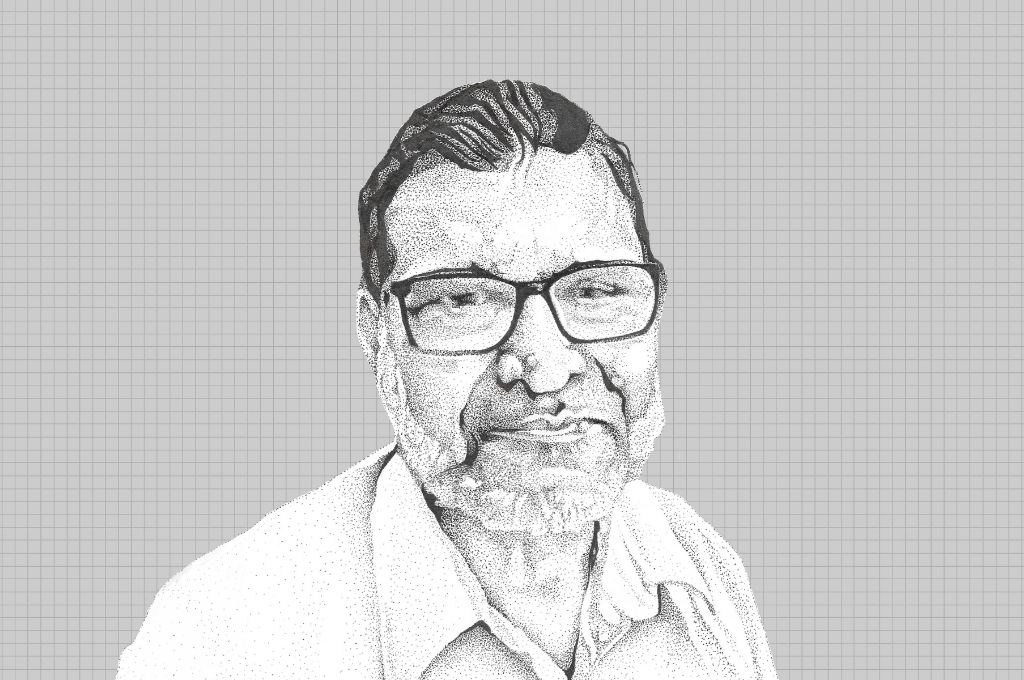Sushma Iyengar is a social activist and the founder of Kutch Mahila Vikas Sangathan (KMVS), an organisation that seeks to empower women to become capable and confident decision-making partners in their village, community, and regional development initiatives.
Over the past three decades, Sushma has been leading transformative action in the country in the areas of gender justice, indigenous cultures, traditional livelihoods, local governance, and disaster rehabilitation. She has pioneered many grassroots initiatives including the Kutch Nav Nirman Abhiyan—a district network of civil society organisations—and Khamir, a platform for craft artisans. Sushma has also authored a book titled Picture This! Painting the Women’s Movement.
In this interview with IDR, she talks about the evolution of the feminist movement in India, and how it led her to work with women in drought-prone Kutch. She explains why a process of transformative action is crucial for women to navigate gender roles and patriarchy, and how the SHG movement’s focus on metrics has greatly diluted the meaning of ‘women’s empowerment’ today.

Could you tell us about some of the early influences in your life?
I was born and brought up in Baroda, Gujarat. My parents moved to the city soon after Independence as my father, who was a microbiologist, had begun working on one of the first indigenous penicillin plants in Baroda.
My childhood was deeply influenced by my parents of course, but also by the cultural milieu of Baroda, which I was privileged to experience from a young age. My father was a gentle soul who filled my life with a lot of books and intellectual pursuits. It is he who instilled a spirit of curiosity and inquiry within me. My mother, on the other hand, was the ‘doer’ in the family, the one who took charge of everything and who would never take no for an answer. I often think of her as the first feminist in my life, who never ventured into public life.
She enrolled my sister and me in a boys’ school along with my brother, as she was against us being educated in a missionary girl’s school, where she felt girls were trained to be ‘girlish’. In retrospect, studying in a boys’ school is perhaps what prepared me to work on gender issues with both men and women later in my life.
Baroda too has had a huge influence on me. As a university town in the 1960s and ‘70s, it was buzzing with students, artists, and academicians from all over the country. Throughout my growing years, the winter months would be filled with concerts, recitals, and theatre every day.
In college I studied English literature, after which I pursued my master’s in literature and economics. By the time I was close to completing my master’s though, I started feeling restless in this world of books and literature. I felt as if I was occupying a world that was completely different from the world ‘out there’. This was in the 1970s and the early ‘80s, which was a politically tumultuous time in India. The Emergency, the Jayaprakash Narayan movement, the George Fernandes Baroda dynamite blast—it felt like a period of ferment. Many young people were discovering a new calling, rising to it, and taking to the streets. Around the same time, the feminist movement in India was moving away from constructs of women’s ‘welfare’, ‘upliftment’, and ‘development’ to focus more on the identity of women, their agency, and their condition and position in society.

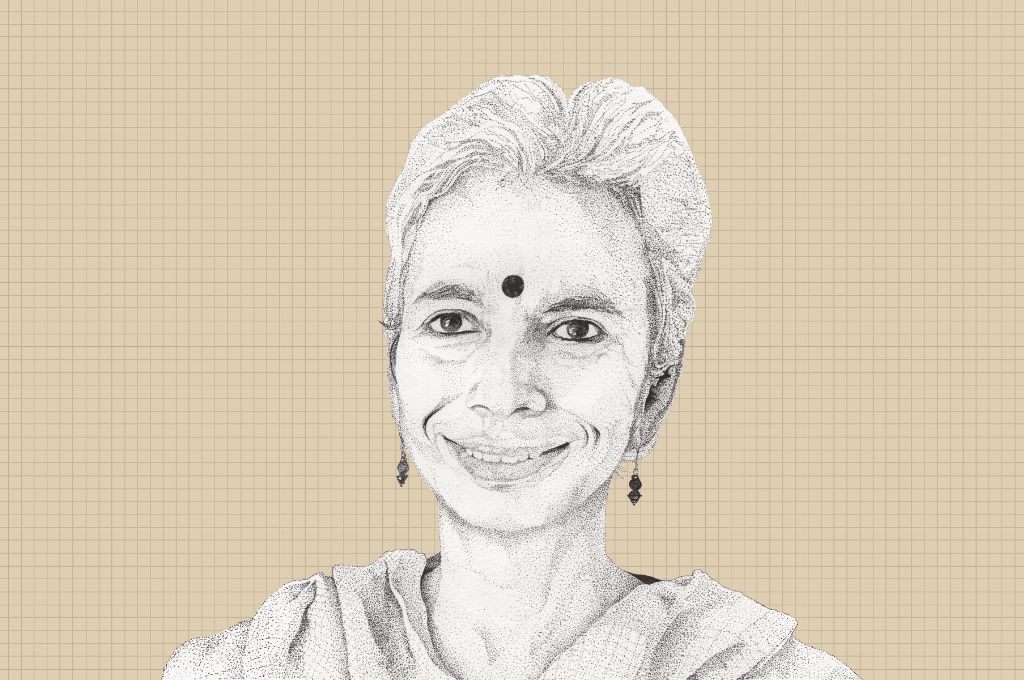
I too was coming into my own as a political being, yearning to become a more active participant in society. Torn and confused between my love for literature and my growing sociopolitical interest, I felt that becoming a political journalist would help me transition from literature to activism. So, for the next two and a half years, I pursued another master’s, in development communication, at Cornell University in the United States of America.
It was actually my time in the USA that made me want to work with women in rural India.
Once there, I did everything but development communication. This was the first time I was interacting with students from all over the world, and it exposed me to so many different perspectives and ideologies, including the Left. This was also when I was introduced to the world of the Brazilian educator Paolo Freire. Even while I was beginning to dive into the works of Gandhi, Ambedkar, and Vinoba Bhave, it was Freire’s pedagogy that spoke to me then, and really implanted tools for my future work with women and rural communities.
How did this lead you to work in Kutch, right at the border between India and Pakistan?
It was actually my time in the USA that made me want to work with women in rural India.
When I returned home after graduating, I was still trying to figure out exactly what I would do next and how I could begin. On a trip to Ahmedabad for an interview with Elaben (Bhatt), founder of SEWA, I met the founders of Janvikas—Pheroz Contractor and Gagan Sethi. Janvikas had just begun its work as a facilitative space supporting young professionals to go and work in rural areas. And soon they became my biggest support in moving to Kutch and helping me to incubate Kutch Mahila Vikas Sangathan in 1989. KMVS focused on organising and mobilising the rural and urban women of Kutch into local collectives, enabling them to address issues concerning their lives, communities, and areas.
In the 1980s, the landscape in India was changing. Delhi-based feminist organisations such as Jagori and Saheli had begun to stir the consciousness of women through creative campaigns, trainings, and sharing of resources. Back home in Gujarat, SEWA was already leading work with women in the informal sector—with trade unions and cooperatives—and beginning to work on forming rural collectives.
For the first time in India, the Rajasthan government launched the women’s development programme, known as WDP, to organise rural women over issues that concerned them. It really was a stimulating time to marry feminism and rural empowerment. However, I felt that feminist work had yet to fully intersect and integrate with the overwhelming issues of rural development. This was something that I was passionate about and wanted to explore further.
Back then Kutch was witnessing huge outmigration due to the continuous droughts from 1985 to ‘88, with women getting left behind. Although the region did have a fair amount of charitable and philanthropic presence, community empowerment work—with women in particular—was not visible. Kutch beckoned me in many ways, and took me in.
What did your work with women in Kutch entail?
Due to the droughts in Kutch, one would find women working tirelessly on drought relief sites—digging useless pits in the hot sun to earn minimum wage. Around the same time, as a part of drought relief programmes, the government handicraft corporation started buying and investing in the local crafts of Kutch, which were being produced by the women there. While this created huge supply and demand for embroidered products from Kutch, the value chain was controlled by intermediaries who happened to be all men. And women were getting a pittance for their labour.
At KMVS, we realised that women had deep locational and geological knowledge of water sources.
More than that though, it was the lack of water that was central to their distressing condition. Traditional water sources lay in disarray even as government-run tube wells tried, and failed, to carry water to villages that were 120 kilometres from the source. With men migrating out with their livestock, the burden of survival fell on women entirely. And yet nobody was turning to the people for solutions. Nobody was turning to women for sure.
At KMVS, we soon realised that they, in fact, had deep locational and geological knowledge of water sources. Women also had a deeper conviction to find sustainable solutions, and more gumption to counter government inefficiencies and corruption than the men. So water did become the rallying point around which issues of patriarchy and gender discrimination were brought up.
It was important to create a safe space for reflection, where women could come together and address the range of issues they were facing.
One thing worth mentioning here is that in some of the communities we began work with, women were not allowed to even step outside their courtyards. And while it was easier for them to articulate their low remuneration and invisibility in their craft production, issues concerning their reproductive health, for example, were shrouded in silence.
So where does one begin? Through our interactions with the sangathans (collectives), especially with their female members, we learnt that for women to navigate issues of patriarchy in their homes and families alone, they would first have to step out into the public domain, take up issues concerning the entire village as a collective, and counter male dominion together.
To stir this process of transformation, it was important to create a safe space for reflection, where women could come together and address the range of issues they were facing. This is how the women’s sangathan as a space for collective action, reflection, and self-realisation was born.
Male members of the community resisted women entering the public domain or playing public roles.
This process of action and reflection, which we know as conscientisation, helped women develop a critical understanding of their social reality. It enabled women to identify and explore the root causes of their oppression. However, coming together wasn’t always about finding a solution to a problem. The mahila mandals and sangathans gave women an opportunity to chat about their lives and their changing worlds, sing and dance together, laugh aloud, argue, fight, celebrate their differences, and script a new identity. In the process, many bonds of friendship were cemented between all of us. More importantly, while I was trying to enter the lives of women in Kutch, I too opened up to let them into my inner world. One cannot expect communities to share their vulnerabilities without sharing one’s own.
It was through many fun-filled, immersive sessions that women gradually came to recognise gender and gender roles as merely variable social constructs. And in the process of reflecting on our circumstances and decisions, we would also try to grapple with our own understanding of why we may have behaved in a particular way. Everyone had to learn how not to feel, think, or be as society said we were ‘supposed’ to.
There was backlash, of course. Male members of the community resisted women entering the public domain or playing public roles. I recall a time in the early 1990s when the women in a village were trying to revive a traditional water body that had not been used for the past 40 years. The male village leaders sued the women, taking them to court over the claim that the land holding the water body belonged to one of them. This turned out to be an epiphanic moment for the women. They pushed back, remarking how earlier they hadn’t even been allowed outside their courtyards but now, thanks to the men, they had reached the court. Eventually, after a large group of women met a startled judge in his chamber, he ordered an out-of-court settlement, which went in favour of the women.
Can you tell us how the women’s movement has evolved from when you began working to today?
When I began working with women, there were similar women’s collectives taking shape in rural Madhya Pradesh, Rajasthan, Uttar Pradesh, Andhra Pradesh, and elsewhere in the country. There was this overwhelming feeling of being part of a shared commons, co-creating a new future with lakhs of women we had never seen or met.
However, the growing effectiveness of women’s collectives led to an inevitable impulse on the part of the state, donors, and civil society at large to multiply the formula, and formalise these collectives. Thus began the upscaling of self-help groups (SHGs).
I have yet to understand how and why SHGs— which are largely an instrument for livelihood generation—became an exclusive community institution for women, with women?
With the SHG movement, a large part of the focus has shifted from women’s conscientisation to metrics and tangible economic achievements. Even though many of the SHGs have been quite successful on these counts, the heart of the women’s movement has somewhere become limited to addressing economic transformations. SHGs may have helped women change their condition of poverty, but they have not necessarily enabled them to transform their gendered position in the socio-economic set-up. The processes of transformation that the women’s movement of the 1980s and ‘90s invested in—one of self-reflection—has been greatly diluted in the optics of ‘women’s empowerment’—a somewhat reductive concept today, a buzzword in the mainstream. To me, it sometimes feels like the soul has gone from the women’s movement.
Moreover, with gender becoming a project embellishment as it were—I know I am caricaturing the moment, but that is how it often seems—the onus of ‘empowerment’ in any programme is squarely placed on women. Men are completely absolved from being active participants and actors in the overall process of transformation— gender or otherwise. I have yet to understand how and why SHGs— which are largely an instrument for livelihood generation—became an exclusive community institution for women, with women? Why don’t we have SHGs of men too?
The positive development I see is that the 73rd amendment, mandating local self-government, has been a game changer for women in the past two decades. The political engagement of rural and urban women in local governance has been quite remarkable.
What I tell myself every day and what I often share with young people these days is that no matter how dark it gets we have to ensure that we don’t allow the darkness to enter us.
And yet, the more women have claimed space in the public domain, the more aggressive society’s pushback has been. Look at the absolutely brutal forms of sexual violence women and girls—across geographies, ethnicities, religion, castes, and age groups—are being subjected to. A prime example of this is the hijab ban in Karnataka, and the kind of abuse women and girls faced because of it.
So, I think these are the two major shifts I see today when I think about all the gains and strides made by the women’s movement in the past few decades. First, most women’s collectives, and SHGs in particular, have become instruments for economic transformation alone. Second, the rise in communal hatred that is ripping through our entire society is robbing the women’s movement of its immense potential to unite irrespective of caste, class, gender, and religious lines.
What are some things that you would like to pass on to young people who are working in the development space already or are just entering it?
Every era sees different challenges. The kind of challenges we are seeing now, for example, where bigotry sits with us in our living rooms, is not something we have ever confronted. So I can’t really speak from experience here. And I consider my words as more of a reflection on us and our times, rather than advice.
What I tell myself every day and what I often share with young people these days is that, no matter how dark it gets, we have to ensure that we don’t allow the darkness to enter us. Because when that happens, all is lost. To avoid that, we must first invest in our own internal transformation and continuously draw on our experiences, practices, and influences. Those of us in the sector are sometimes so focused on working for external transformations that we miss looking inwards. To be able to give oneself to this space consistently and committedly, to remain spirited, and quietly resist all forms of oppression, dominance, and injustice, one cannot but remain equally committed to one’s own being, and to the practice of becoming aware of oneself in every moment, at all times.
I think each one of us needs to resist the kind of intolerance and hatred we’re seeing today and bring back a spirit of non-violence in our actions and our thoughts.
Many young people I interact with share the kind of pressures they experience. They have aspirations of wanting to be ‘big’ in order to be impactful and effective, with everyday achievements being announced on social media. It can make one feel anxious and inadequate constantly.
So, what I want to share is this: We should not shy away from doing things that may seem small. Small is beautiful. When we keep the small within us alive, our hearts just keep growing larger, and we ourselves become bigger and better human beings. We have to remind ourselves that some of the biggest transformations have taken place because of some very ‘small’ acts and actions.
But when we suffer from the pressures of scale, of waiting to become big, our hearts begin to shrink a bit.
I also feel that, as members of civil society, we all need to do much more than we are doing now in order to snap out of this collective inertia. We need to move beyond business as usual. Maybe we need to step back, go out afresh, and re-engage with young minds and hearts across our remotest villages, kasbas, urban informal settlements, universities, and the most privileged and underprivileged spaces, in order to redefine the way forward.
If we do not allow ourselves to be a medium to shift the moral compass in society today, then we may regret it in the future. I think each one of us needs to resist the kind of intolerance and hatred we’re seeing today and bring back a spirit of non-violence in our actions and our thoughts. Because non-violence is really nothing but the presence of love—where there is love, there will be no violence.
Civilisations have seen so many cycles of change where things really caved in and where the darkness rose. But then, perhaps, the darkness comes only for us to be able to see that thin ray of light shining through the cracks.
—
Know more
- Learn more about India’s feminist movement in the last decade through this interactive article.
- Read this interview with Kamla Bhasin, one of the most prominent voices in India’s feminist movement.

